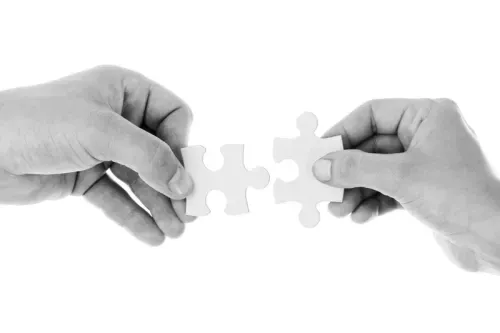Revolutionary Voice Cloning with Brain-Computer Interface
Traditional speech assistants rely on eye-tracking, causing fatigue and limiting your communication. MindSpeaker offers a future-proof AAC solution that adapts to your needs and learns your unique communication style.

How to Get Started with MindSpeaker
Experience our cutting-edge voice cloning technology and wearable brain-computer interface without any upfront commitment.
Try the Software
Explore our communication software completely free of charge. Test out the voice cloning capabilities and user interface.
Connect with Professionals
Work with your speech therapist or local AAC contact to arrange a convenient at-home hardware demonstration. Schedule Demo
Ongoing Support
Our team is here to support you in accessing the right tools for your needs, no matter where you are located.
How do you know if you need a Brain Computer Interface (BCI)?
Let us help you to figure out how we can help you best. Take a look at these steps or leave us a message so we can guide you.
1. Assess Current Communication Challenges
Identify and evaluate the difficulties you face with traditional communication methods (e.g., speech, typing, or using eye-tracking devices). Consider the impact of these challenges on your daily life and interactions.
2. Evaluate Fatigue and Accuracy
Reflect on how often you experience fatigue or inaccuracies with your current assistive communication tools. If you frequently struggle with maintaining accurate communication due to tiredness or device limitations, a BCI might be a better solution.
3. Explore the Benefits of BCI Technology
Research how BCIs can improve your communication by offering direct brain-to-device interaction. Consider how this technology could reduce the effort required for communication and provide more seamless and intuitive interactions.
4. Consult with Healthcare Professionals
Speak with your speech therapist, neurologist, or other healthcare providers about the potential benefits and suitability of a BCI for your specific condition. Their expertise can help you understand whether a BCI is the right fit for your needs.
5. Try Before You Decide
Take advantage of trial opportunities to experience a BCI firsthand. MindSpeakerBCI.com offers demos and collaborations with your healthcare team to ensure you can test the technology in a comfortable, familiar environment before making a decision.
Learn how the Software and Hardware from MindSpeaker assist those who struggle to be heard.
Find an overview of indications associated with speech disorders.
ALS (Amyotrophic Lateral Sclerosis)
A neurodegenerative disease that affects nerve cells in the brain and spinal cord. ALS stands for Amyotrophic Lateral Sclerosis, which is a progressive neurodegenerative disease that affects the nerve cells in the brain and spinal cord responsible for controlling voluntary muscle movement. This results in muscle weakness, stiffness, andatrophy, leading to difficulty with speech, swallowing and movement.
Who?
Approximately 450.000 people are living with this disease worldwide. It can affect anyone.
Approximately 450.000 people are living with this disease worldwide. It can affect anyone.
CP (Cerebral Palsy)
CP is a neurological disorder cause by brain damage that affects movement, posture and coordination. This leads to a range of physical and cognitive symptoms such as muscle weakness, spasticity… Difficulty with speech, vision and hearing are also symptoms that occur.
Who?
Approximately 17 million people are living with this disorder worldwide. It is typically diagnosed in early childhood.
Approximately 17 million people are living with this disorder worldwide. It is typically diagnosed in early childhood.
MS (Multiple Sclerosis)
Multiple Sclerosis is a chronic and progressive autoimmune disease of the central nervous system. The immune system attacks nerve fibers in the brain and spinal cordThis leads to muscle weakness, difficulty with coordination and balance, and problems with vision and cognitive function.
Who?
Approximately 2.8 million people are living with this disorder worldwide. It affects mostly women between the age of 20 and 40.
Approximately 2.8 million people are living with this disorder worldwide. It affects mostly women between the age of 20 and 40.
PD (Parkinson's Disease)
Parkinson’s Disease is a progressive neurogenerative disorder of the nervous system. It occurs when there is a loss of dopamine-producing cells in a part of the brain. This leads to a disruption in the brain’s communication with the rest of the body. It can also cause non-motor symptoms.
Who?
Approximately 10 million people are living with this disease worldwide. It can affect anyone, but it’s most common over the age of 60.
Approximately 10 million people are living with this disease worldwide. It can affect anyone, but it’s most common over the age of 60.
TBI (Traumatic Brain Injury)
Traumatic Brain Injury is a type of injury that occurs when a sudden trauma or blow to the head disrupts the normal functioning of the brain. This leads to headaches, dizziness, confusion, memory loss, seizures, and changes in mood or behavior.
Who?
Every year, approximately 69 million people are getting diagnosed worldwide. It can affect people of all ages.
Every year, approximately 69 million people are getting diagnosed worldwide. It can affect people of all ages.
Stroke (Medical emergency)
Stroke (Medical emergency)Read lessA stroke happens when blood flow to a part of the brain is interrupted or reduced, due to a blocked or ruptured blood vessel.This causes weakness or numbness in the body, sudden confusion or difficulty speaking sudden trouble seeing, headache…
Who?
Every year, approximately 15 million people suffer a stroke worldwide. It can affect anyone, but the risk increases with age.
Every year, approximately 15 million people suffer a stroke worldwide. It can affect anyone, but the risk increases with age.
Indications associated with speech disorders
MindSpeaker is currently placing a high priority on addressing medical conditions that significantly affect a patient’s ability to speak, particularly those caused by paralysis. Our focus is on developing solutions to enhance communication for individuals facing challenges in verbal expression due to paralysis-related issues.

